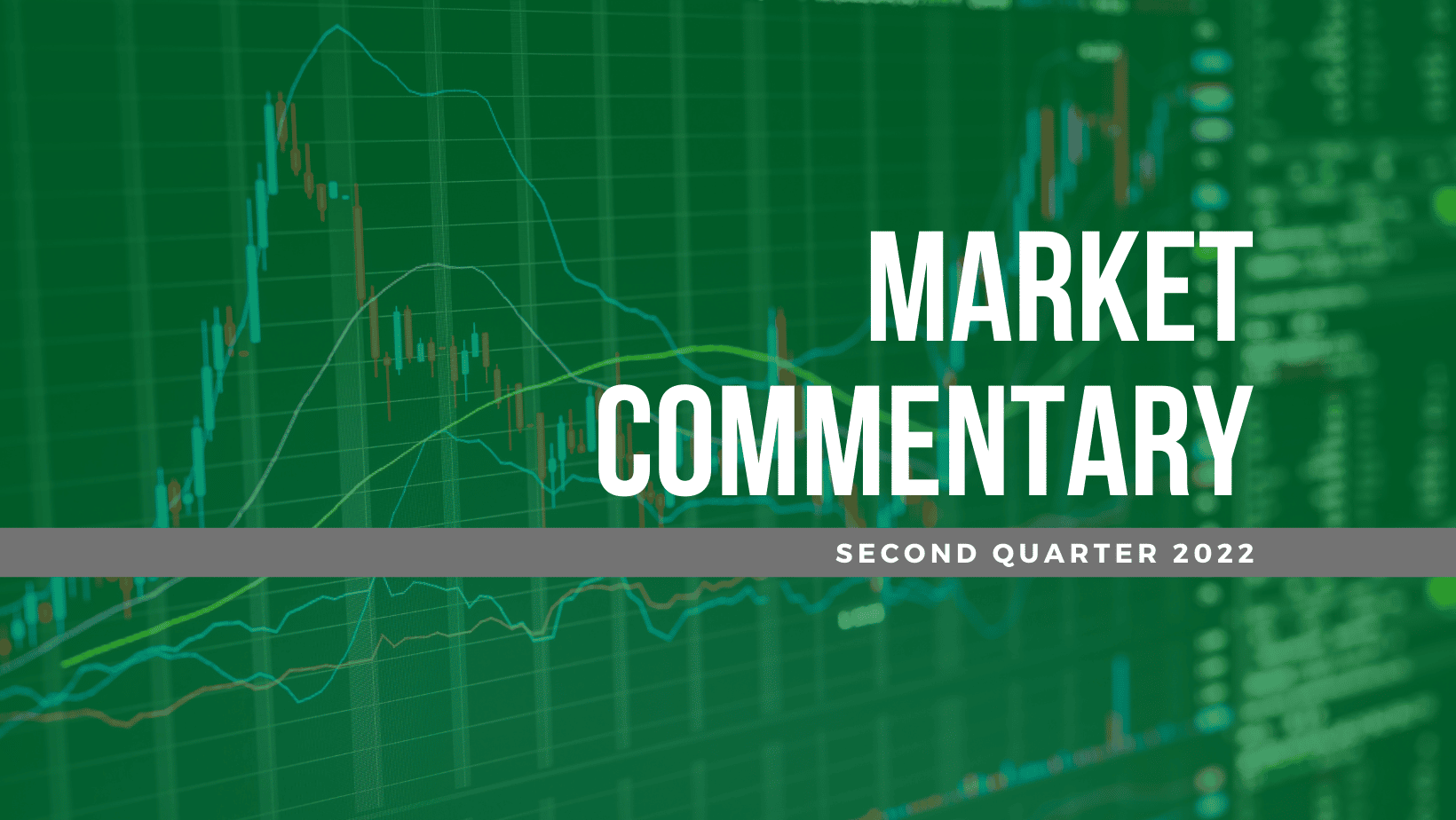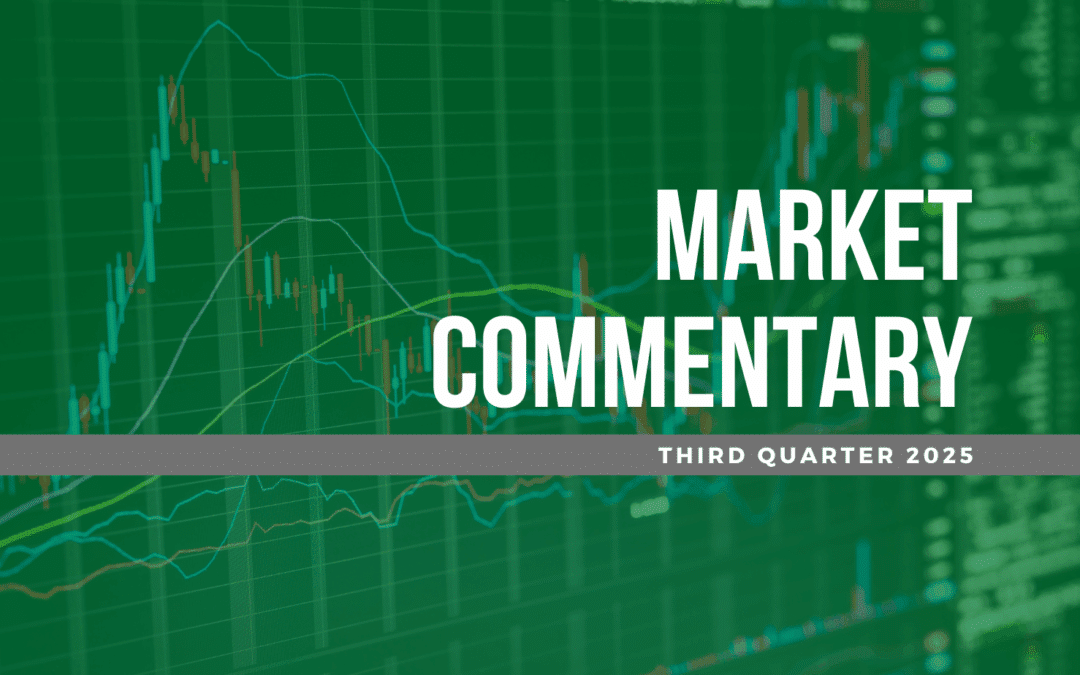Economic Overview
By Dr. Mark Pyles
The second quarter of 2022 began with some degree of optimism. Financial markets sprinted to the finish to end the first quarter, driven in large part by the belief that inflation was either at or very near peak levels and would soon roll over. The April Consumer Price Index (CPI) report further supported that notion with a month-over-month (MoM) gain of only 0.3% and year-over-year (YoY) levels decreasing to 8.3% (still a 40-year high). Meanwhile, economic growth remained stable with a very tight labor market, supply chain disruptions slowing, and consumers continuing to spend money at healthy levels.
However, more recent data has proven to be disappointing. Headline CPI for May came in higher than expected at 1.0% for the month and 8.6% YoY. This was driven in large part by double digit increases in energy and travel categories. Fuel prices continue to be a significant concern with the national average of gasoline increasing from approximately $4.20 per gallon at the beginning of the quarter to just over $5.00 in June before moderating slightly near quarter end. Inflation remains broadly elevated, with more than 70% of the CPI basket increasing in excess of 4% annualized.
The Personal Consumption Expenditure (PCE), the preferred measure of inflation by the Federal Reserve (Fed), shows equally elevated levels, with a headline reading of 6.3% YoY for June. Core PCE (4.7% YoY) is also far in excess of the Fed’s 2% target. Perhaps most importantly, inflation expectations remain elevated. The preliminary reading from the University of Michigan’s survey reported longer-term inflation expectations had increased to 3.3% – alarming financial markets and the Fed alike – before adjusting the number down to a less threatening 3.1% in the final version of the report.
The current economic environment is just as much about the Fed’s interaction with and reaction to data as it is the data itself.
The Fed finally admitted in late 2021 that the inflation being experienced was indeed not transitory and instead began to present a much more hawkish narrative. Following a lift off raise of 25 basis points (BP) at the March meeting, the Fed added another 50 BP in May. The expectation was that another 50 BP hike would occur at the June meeting and all guidance leading up to the meeting supported that expectation. However, following the May CPI report coupled with the University of Michigan’s Consumer Sentiment Index dropping to an all-time low on the same day, the Fed chose to raise by 75 BP, bringing the current target range of the fed funds rate to 1.50% – 1.75%. This move was the largest since 1994 and was accompanied by a distinctly more hawkish trajectory outlined by Chair Powell in the June-meeting press conference.
The Fed’s Summary of Economic Projections (SEP) saw significant adjustments to the Fed’s projections of future economic results. Expectations for Core PCE inflation now stands at 4.3% for 2022 before tapering down to 2.3% in 2024. At the same time, significant downward adjustments to GDP growth estimates and more subtle increases in the expected unemployment rate create what many view as a more reasonable outlook than conveyed in prior meetings. The dot plot (the internal projections for the Fed rate path) added to the hawkish movement, by suggesting a median rate of 3.4% by year end could be warranted, and further expanding to as high as 3.8% by end of 2023.
A primary question continuing to be debated by financial market participants is whether the Fed can orchestrate a soft landing by reducing inflation significantly towards the 2% target without putting the economy into a recession. While the Fed maintains this desired outcome remains possible, the opportunity to do so is becoming increasingly narrow. First quarter real GDP was a negative surprise for the market coming in at -1.6%, down from a very robust 6.9% in Q4 2021. Within this number, personal consumption decreased to 1.8%, down from 2.5% in the previous quarter.
While the labor market does remain historically tight with nearly two open jobs for every person looking for one, there have been some recent signs of softening. Further, retail sales data for May indicate that at least some consumers are choosing to spend less. Inventory drag due to buildup from last year’s over-ordering is challenging firm margins, as is a very strong dollar for those with heavy international exposure. Finally, the housing market is showing signs of softening, likely heavily influenced by mortgage rates that have nearly doubled year-to-date.
All of these create headwinds to growth that are concerning. Ultimately, we enter the current quarter in a similar position as the last, with optimism rooted in the hope of inflation finally slowing and a healthy labor market but mixed with a healthy dose of caution in light of slowing economic output. Put more directly, both inflation and economic growth rates are nearly certain to decrease in a meaningful manner soon. However, the order in which it happens is critical in determining both economic and financial market results in the short and mid-term future. If inflation rolls first, the Fed will have incentive to reduce the pace and extent of monetary tightening and, as a result, hopes of avoiding a recession could be lifted. Alternatively, if growth breaks lower before inflation cools, recessionary odds increase.
The Stock Market
By Walter Todd
There is no real way to sugar coat what happened in second quarter in the equity market. Some very unwelcome facts about the -16.1% performance for the S&P 500 for the quarter: It was the worst second quarter for the Index since 1970, the worst overall quarter since Covid in first quarter of 2020 and fourth worst overall quarterly performance in the past 20 years. Combined with the negative performance from the first quarter, this was the worst first half since 1970. You get the picture – it was rough. The combination of slower growth and the Fed aggressively raising rates due to higher inflation were a near perfect storm for risk assets. The Economic Overview above outlines these dynamics from an economic perspective. Before we look at what the second half may hold, let’s take a closer look inside the equity market numbers for the second quarter and first six months of 2022.
For the quarter, the S&P 500 Index closed down -16.1%, including dividends, and fell -20.0% for the first half of 2022. Small-cap stocks (as measured by the S&P 600) performed slightly better, ending the quarter lower by -14.1% and -19.0% year-to-date. This was again different from another small cap index, the Russell 2000, which was off by -17.2% for the quarter and -23.4% YTD. International stocks surprisingly outperformed the US in the most recent period with Developed International Markets falling by -14.3% for the quarter (as measured by the EAFE Index). Emerging Markets (EM) declined slightly less, down -11.4% for the quarter (using the MSCI Emerging Market Index). For the year-to-date period Developed International and Emerging Markets ended lower by -19.2% and -17.6%, respectively. Putting the US and International Markets together, the MSCI All-Country World Index (ACWI) finished down -15.5% for the three-month period and -20.0% YTD.
The sector performance in the quarter was decidedly defensive. All eleven sectors were negative for the period but seven outperformed the benchmark. Consumer Staples, Utilities, Energy and Healthcare were the top four sectors, down between -4% and -6%. Prior to the broad-based June selloff, the Energy sector had been up 14% for the quarter. Real Estate, Industrials and Materials outperformed the index but still fell between -15% and -16% in the second quarter. Financials, Technology, Communication Services and Consumer Discretionary were the worst performers for the period, dropping between -17% and -26% over the most recent three months. For the year-to-date period, Energy remains the leadership area and only positive sector, rising over 31%. Utilities down less than -1% and Consumer Staples and Healthcare down between -5% and -8% in the first six months highlight the defensiveness of the market so far in 2022. Real Estate, Technology, Communication Services and Consumer Discretionary all dropped in excess of -20% YTD.
As we look forward to the next six months, it may be helpful to look back at history. We talked about the first six months of 1970 earlier. That year, the S&P 500 was down -19.5% in the first half. The second half of the year was up 29.1%. 1962 is another analog, with the market down -22.2% in the first six months of the year and rallied 17.4% in the second half. I would note that, like 2022, both of these years were mid-term election years.
We have discussed in past commentaries that by waiting too long to begin raising rates and reduce liquidity, the Fed risked having to slam on the brakes to avoid the traffic ahead. The problem with slamming on the brakes, is you sometimes lose control of the car and get in a wreck anyway.
By hiking aggressively into slowing growth, the Fed is causing collateral damage in the economy and financial markets. If we look at the performance of commodities, equity sectors and interest rates over the past two to three weeks, it seems clear the market is starting to price in the idea that inflation has peaked and that growth is slowing rapidly.
The question is when does the Fed come to the same conclusion and ease up on the brakes. Given the slowdown in demand, we are watching the upcoming earnings season very closely. Specifically, while stock prices have moved significantly lower in the past six months, earnings estimates have not changed to reflect the new reality of the economic and market environment. As companies report invariably lower numbers, how do the stocks react to this bad news? This will give us an indication if enough is reflected in shares. Unfortunately, as we have seen dramatically in the negative reactions to reports from Target, Netflix and others in the past several months, we could have more volatility ahead. To end on a positive note, given negative returns over the past six months, the prospect for forward returns in the coming years has improved significantly.
The Bond Market
By John Wiseman
Bonds struggled again this quarter, reacting to the inflation indicators covered in the Economics section above. Yields continued to march higher until the June 15th meeting of the Federal Reserve (Fed) that seems to have regained the narrative of an inflation fighter no matter the cost. It may be late (as is typical) since many economic reports since then are showing a weakening trend. The last two weeks of the quarter saw sharp moves lower in yields, but this did not offset the prior weakness. The yield on the 2-Year Treasury Note increased by 62 basis points (BP) (0.62%) this quarter to 2.95% resulting in a total return of -0.50% for the quarter. For the year, the yield is 222 BP higher (2.22%) for a total return of -2.98% for the year. The yield on the 10-Year Treasury Note moved up 67 BP (0.67%) and 150 BP (1.50%) to 3.01% for the quarter and year, respectively, resulting in total returns of -4.92% and -11.34%. Inflation will remain a problem for the Fed to tackle, but at a declining rate. Rates should continue to moderate though we see value in shorter maturities that offer the same yield as longer ones.
The weakness in corporate bonds continued into the second quarter. The spread of the Bloomberg Intermediate Corporate Index continued its march higher and ended the quarter at 139 BP (1.39%) – the highest since the 2020 pandemic and well above the 10-year average of 100 BP (1.00%). The total return of this index was -3.92% for the quarter and -8.97% for the year. There is only one other 2-quarter period in the near fifty-year history of this index that is worse (the period ended March 31, 1980). Corporate bond issuance slowed dramatically as higher yields and wider spreads combined to create a less advantageous environment. With yields in the 4% range for higher quality corporate bonds, we think investors will favor this area. Broadly speaking, corporate balance sheets are in good shape.
After the worst quarter for the index dating back to 1988, municipal bonds were the best relative performers in fixed income. The Bloomberg 5-Year Municipal Index ended the quarterly period with a total return of -0.42% and is -5.50% for the year. The ratio of the 5-Year Municipal to Treasury, a measure of relative value, is 74% which is slightly below the ten-year average. Issuance of municipals remains low and demand should stay strong as tax rates have moved higher. We continue to favor municipal bonds for investors in higher tax brackets.
Market Indicators
Source: Bloomberg
| QTD 2022 Total Return1 | YTD 2022 Total Return2 | 52 Week Total Return3 | |
| S&P 500 | -16.11% | -19.97% | -10.64% |
| DJIA | -10.78% | -14.44% | -9.05% |
| NASDAQ | -22.27% | -29.22% | -23.40% |
| S&P 400 | -15.44% | -19.57% | -14.69% |
| S&P 600 | -14.13% | -18.97% | -16.88% |
| MSCI EAFE | -14.32% | -19.23% | -17.26% |
| MSCI Emerging Markets | -11.40% | -17.57% | -25.08% |
| MSCI ACWI | -15.54% | -19.97% | -15.36% |
| Barclays Int. Gov’t/Credit | -2.37% | -6.77% | -7.28% |
| Barclays Aggregate Bond | -4.69% | -10.35% | -10.29% |
| Barclays 5-Year Municipal | -0.42% | -5.50% | -5.34% |










